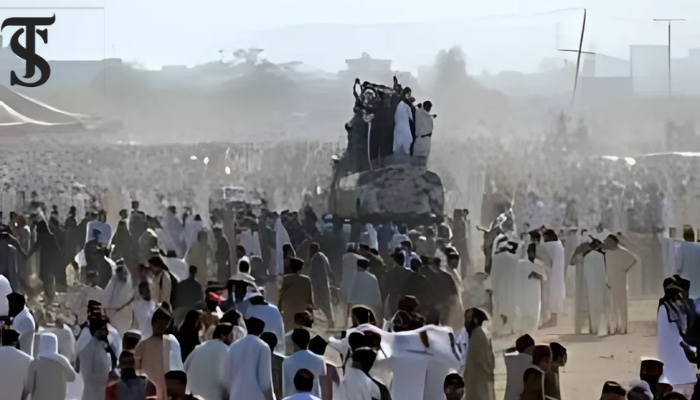The Resurgence of TTP: A Strategic Roadmap

- The resurgence of TTP is fueled by inconsistent policies and the lack of comprehensive human development strategies.
- Military operations have been successful, but the lack of non-kinetic efforts, such as economic development and de-radicalization, undermines long-term stability.
- Effective counter-terrorism requires consistent policies, social change initiatives, and inclusive approaches involving local communities and religious institutions.
Despite significant military operations, inconsistent policies have fuelled the resurgence of TTP (Tehrik-i-Taliban Pakistan)Unfortunately, counter-terrorism efforts have eliminated terrorists but failed to address the root causes due to lack of comprehensive strategies for human development and prosperity. Therefore, a holistic approach is sine qua non to extinguish the blaze of terrorism.
Terrorism has remained one of the major threats to the security, socio-political stability, and economic prosperity of Pakistan. Most troubling is that this terrorism is religiously motivated, with its roots tracing back to the Afghan war. When Pakistan allied with the US in the war on terror after 9/11, the TTP explicitly amalgamated various militant groups against Pakistan. Since then, Pakistan has launched many operations against the TTP, including Operation Enduring Freedom, Operation Al Mizan, Operation Zalzala, Operation Sher Dil, Rah-e-Haq, Rah-e-Rast, Rah-e-Nijat, Operation Zarb-e-Azb, and Operation Radd-ul-Fasaad. Among these, Operation Zarb-e-Azb has been the most effective in keeping a tight rein on terrorists.
In light of these events, the armed forces successfully carried out field operations against terrorists. However, the TTP has re-emerged and resumed attacks in various places. Despite these military operations, what are the reasons behind the sustained threat of TTP? How has TTP managed to maintain its threat level? This needs deeper understanding. The alarming reason is that the Afghan policy has backfired. After installing a like-minded regime in Afghanistan, a proper mechanism was not established to counter the TTP. The Taliban takeover provides a safe haven for the reorganization of the TTP. Moreover, the release of thousands of terrorists has boosted their morale. Therefore, decision-making authorities should be aware of the fact that the TTP and the Taliban are two branches of the same ideological tree.
When asked to stop using Afghan soil against Pakistan, the Taliban regime urged Pakistani authorities to engage the TTP in discussions. The decision to reconcile with terrorists was a significant blow to the martyrs of the APS, security forces, and other civilians. Predictably, the negotiations stalled when the TTP demanded the repeal of the 25th amendment, which was impossible.
In Pakistan, the decision-making process is more personalized than institutionalized. There is no clarity on managing the resurgence of terrorists. The effectiveness of NACTA is also questionable due to its lack of a proper institutional framework. Although the National Action Plan brought some positive results, its loopholes and poor implementation led to the formation of NAP 2. To be effective, its scope must be broadened with a data-driven approach.
There is still room for improvement in the kinetic domain. Although the lethal military expeditions are commendable, terror financing remains a significant issue. The lack of a substantial mechanism to deal with the illegal supply of narcotics and weapons boosts the confidence of militants. Therefore, it is necessary to develop maturity in countering terrorism on every front.
The non-kinetic domain is crucial in countering terrorism. Implementing a de-radicalization program is essential, which is impossible without human development. The merged areas of KPK still lack basic health facilities, education, and economic opportunities. Thus, it is imperative for the government to bring economic development and good governance to these troubled areas.
Without reforms in the criminal justice system of the tribal areas, discontent among the people will persist. Proper legislative oversight is needed to strengthen the civil administrative system. The police order also lacks the necessary mechanisms. Consequently, the military is often involved in daily routines, which stirs up public discontent. Therefore, local law enforcement agencies need consolidation.
Regulating religious seminaries must be a primary concern. Credible Ulemas should be convinced to institutionalize Madrasas. All stakeholders should outline an inclusive syllabus for seminaries to end orthodoxy. Lastly, a comprehensive foundation should be laid to phase out pseudo-religious ideas.
In conclusion, every counter-terrorism effort should be followed by consistent policies. Following military operations, the focus must shift to social change through human development, de-radicalization programs, and effective monitoring policies. There must be a carrot-and-stick approach towards Kabul. Supporting a regime against the will of the people in neighbour country can have serious consequences. Therefore, fostering goodwill among the Afghan people would be more effective than installing a like-minded regime. Finally, local communities affected by conflict must be consulted before drawing conclusions.
Zia-ud-Din
The writer is a student of Political Sciencs at Baha-ud-din Zakariya University, Multan.






One Comment